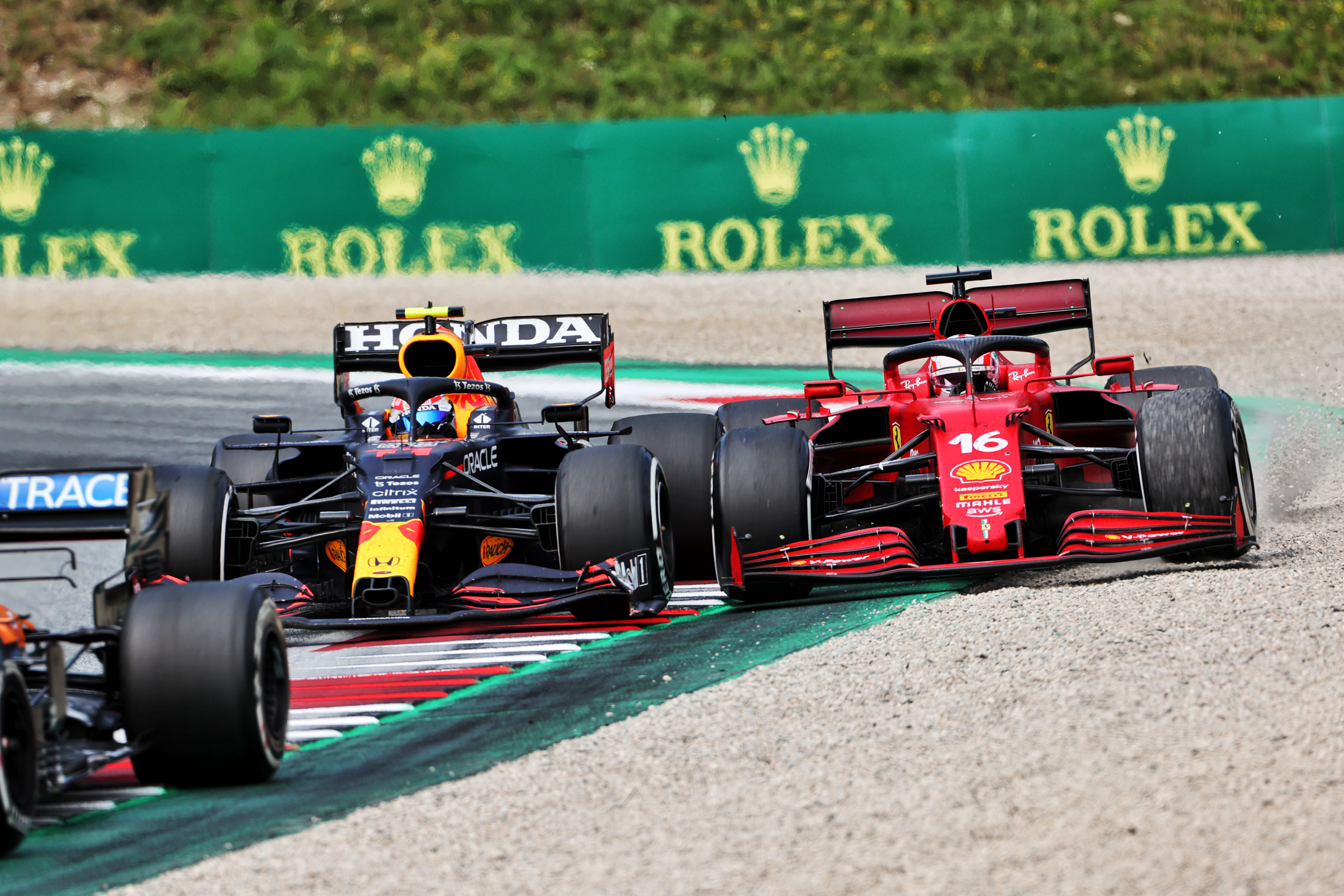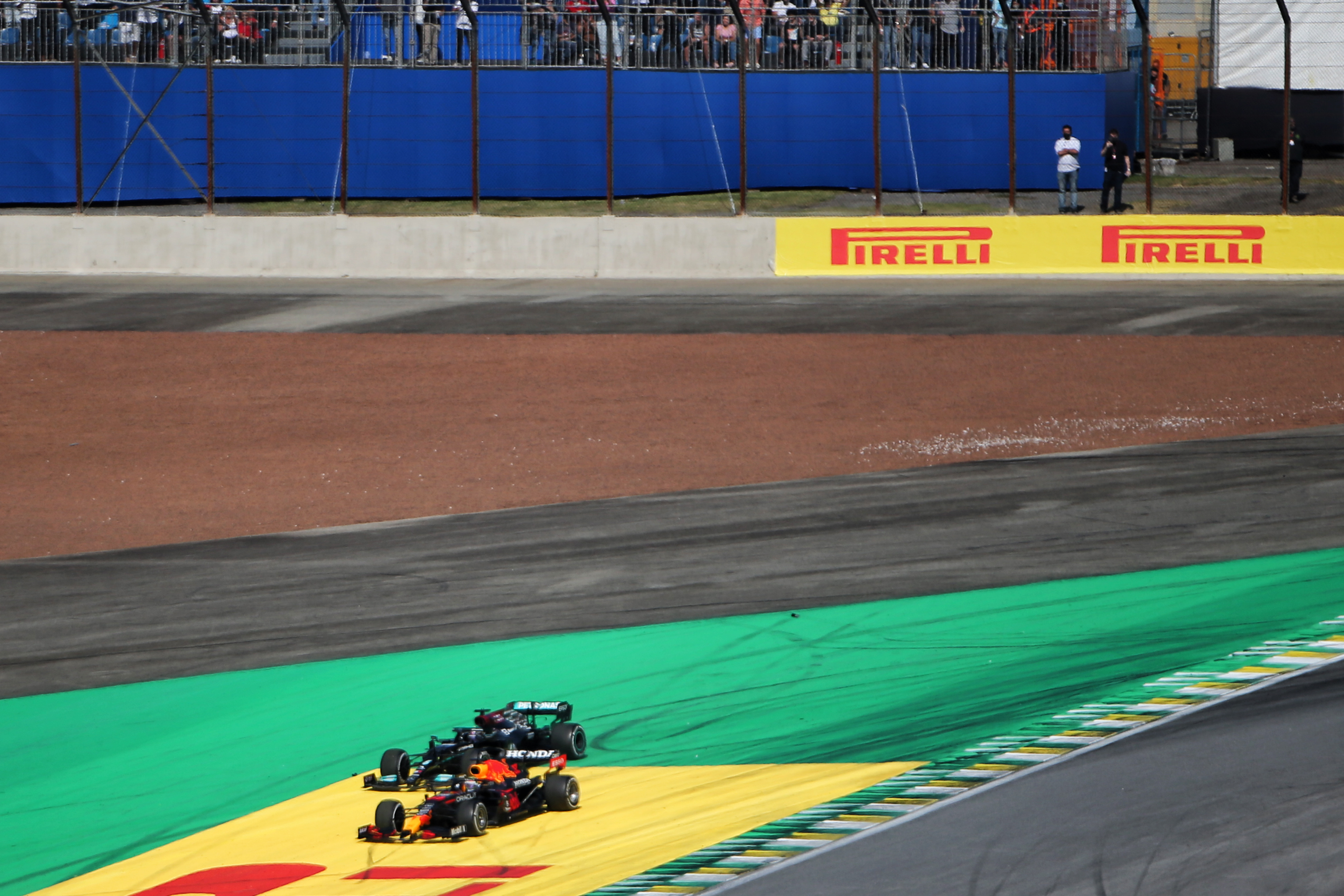Up Next

New footage has been revealed from Max Verstappen’s forward-facing onboard camera during his Brazilian Grand Prix incident with Formula 1 title rival Lewis Hamilton.
The F1 stewards did not have access to this angle when judging the moment that happened between the pair when Hamilton made his first major bid to pass Verstappen for the Interlagos lead into the Descida do Lago left-hander and both went wide onto the run-off area as Verstappen defended the inside.
Only Verstappen’s rear-facing camera was broadcasting live at the time, so this, footage from the camera on Hamilton’s Mercedes and the overhead helicopter view were what the stewards used when deciding the incident did not require an investigation or a penalty.
Hamilton went on to win the race after passing Verstappen at the same place without incident 11 laps later.
The forward-facing footage from Verstappen’s Red Bull has now been released retrospectively by F1 itself and its broadcasters.
Does it reveal anything that would have changed the stewards’ minds?
Here’s Edd Straw’s view:
Max vs Lewis ⚔️
Every angle on their Lap 48 battle 👀 #BrazilGP 🇧🇷 #F1 pic.twitter.com/9NLHajCiPv
— Formula 1 (@F1) November 16, 2021
The onboard shows that at the braking point, Verstappen’s front wheels were overlapping with Hamilton’s rear wheels at the moment Verstappen starts to apply steering lock.
The positioning at corner entry is relevant because the penalties issued to Lando Norris and Sergio Perez at the Austrian Grand Prix established the interpretation that if a car is “side by side” – with the implication being this means front wheel to front wheel – then the driver on the inside must give room.

Verstappen never winds off the steering lock, although there is a slight hesitation early in the turn-in phase.
But what is clear is that as he moves towards the apex he does pick up some understeer that ensures he misses the apex.
To fully understand what the onboard shows it would be necessary to align it with the detailed telemetry data showing steering trace compared to any comparable laps, speed and crucially the brake trace.
It’s difficult to be sure if Verstappen eases off the brake at any point, although what is clear is that he is very attacking on the brakes given that is what allows him to pull alongside Hamilton during the corner then push him wide at the apex.
While there has been much talk about the steering angle, and this certainly doesn’t show him dramatically opening the steering to force Hamilton wide, these other factors are crucial.
Verstappen cited worn tyres for understeering, but as the car on the inside it’s his responsibility to ensure that he doesn’t brake too late and carry too much speed in to make the corner.
And while Verstappen insisted the Silverstone precedent wasn’t relevant because they are different corners, stewards there did mention that Hamilton failing to hit the apex was a factor when penalising him for the title rivals’ British GP collision.

Verstappen does fail to hit the apex here, which precedent suggests is therefore relevant.
Regardless of what happened, the FIA stewards might well have felt that the unofficial ‘no harm, no foul’ policy that appears to be part of the ‘let them race’ principle still applies – especially as Hamilton did subsequently take the lead.
But the onboard footage does support the notion there is at least a case to answer, although the fact that this incident did not decide the battle between the pair means it could still be shrugged off in retrospect.






